Table of Contents
Introduction
Animal tourism is a hugely lucrative industry world wide. All over the planet people exploit animals for profit through tourism.
It is often people who consider themselves animal lovers who fall into the trap of supporting animal tourism, without realising the cruelty and suffering behind it. This is often because the industry works so hard to project an image of having happy animals that are treated well.
A widely accepted rule of thumb is that if an attraction is profit making, then profit is their top priority, not animal welfare.
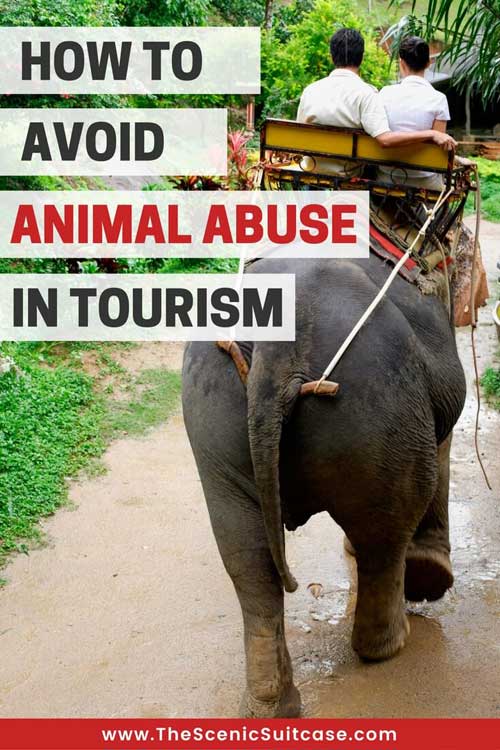
The animal tourism industry have realised that many people would like to visit and support places that actually help animals. This has resulted in some animal attractions that exploit animals for profit, masquerading as animal sanctuaries and rescues. Any of these attractions that guarantee certain experiences or interactions with wild animals are not to be trusted.
It can be difficult to ascertain which are the genuine rescues and sanctuaries, and which are the animal exploiters. On this page you can find to reduce the risk that you will be funding animal suffering and exploitation in the animal tourism industry. Some of these attractions can be on your own doorstep.
However, one persons criteria for what constitutes animal exploitation may differ from another persons. This page will try to give as much information as possible to help you decide.
To learn more about the abuse animals suffer in animal tourism, go to this page.
What is Animal Tourism?
Animal tourist attractions can be anywhere where visitors pay to see, or interact with, captive animals. They are places animals are used to make profit.
Just a few examples are animal parks, zoos, circuses, aquatic attractions, rides with animals, posing with animals for photos, swimming with dolphins.
In animal tourism, animals are only valuable while they are making a profit. If it is not cost effective to keep them or treat them, etc, they are considered disposable.
Please see the Abuse In Animal Tourism page to learn of the cruelty behind the industry.
Image: Swimming with dolphins is one type of cruel animal tourism. Source

Tourists Rarely Recognise Cruelty In Animal Tourism
Wildlife attractions account for between 20 and 40 percent of all tourism worldwide, with 3.6 to six million people visiting these sites annually.
In the first major study of wildlife tourism around the world, researchers at the University of Oxfordâs Wildlife Conservation Research Unit found that every year, two to four million tourists financially support attractions that arenât good for animal welfare or conservation. It found that 80 percent didnât recognise that certain wildlife attractions werenât good for the animals. Therefore they would unknowingly fund animal cruelty.
For more information on the study as reported in The National Geographic, see here.
Image: Paying for tourist elephant rides is funding animal cruelty behind the scenes. Source

You can also read the article below, from Positively Vegan Magazine, about cruel animal tourism, how to avoid supporting it, and about possibly volunteering to help at a vegan tour company in Thailand.

Cruel Animal Tourist Attractions
Many animals in the tourism industry are kept in poor, cruel or inappropriate conditions. They are treated badly until their spirits are broken. Some of the cruellest animal tourism is in South East Asia.
Wild animals at some attractions, such as the Tiger Temple in Thailand, are drugged. This is often misinterpreted by tourists as the animals being relaxed and contented. They are drugged so tourists can have photographs with them, or interact with them. Find out more about the Tiger Temple here.
At another animal attraction in Thailand, there were recent reports of a cute male Bengal slow loris, called Boris, having his teeth ripped out so he couldnât bite tourists.
Sometimes even viewing wild animals in the wild can make animals suffer, depending on how the tour operators run things. Whale watching can be one of those activities.
Many people believe that animals in attractions are all bred in captivity. In fact, animals are stolen from the wild so people can see them in in wildlife tourist attractions. Sometimes they are used simply to attract tourists to an establishment so they can sell them whatever they are selling.
A World Animal Protection report recently rated the 10 cruellest animal tourism activities. They include: riding elephants, visiting civet-coffee plantations, bear parks and crocodile farms, walking with lions, holding sea turtles, watching performing dolphins, dancing monkeys and charmed snakes, and, of course, taking tiger selfies.
Please see here to learn of the cruelty behind the animal tourism industry.
Image: Many dolphins in captivity are stolen from the wild. Their families try to protect them and are often injured or killed in the process. This, and captivity, causes these animals â second in intelligence only to humans â great distress. Source

Attractions Claiming To Help Animals
The animal tourism industry work very hard on PR to make people think that the animals they exploit are happy and not suffering, and that they are actually helping animals by being part of conservation efforts. In attractions that are there to make profits, this is usually not the case, as when profit comes first, it means animal welfare does not.
Many zoos and safari parks are criticised for imprisoning wild animals in captive, unnatural environments where they cannot roam miles or behave like they would in the wild. These attractions work hard to make the public believe that they are actually helping animals because of their conservation efforts.
When it comes down to it, businesses that exploit animals for profit have profit as their number one goal, not animal welfare. Doing a little conservation work hardly makes it any better for the individual wild animals they imprison to make money from the public.
Some Animal attractions mislead tourists by using the words âSanctuaryâ, âRescueâ, or related terms, in their names. This article warns of many such places that should be avoided and not supported, and explains why.
If you would like to learn more about the cruelty involved in the industry, please see here.
Image: Suncoast Primate âSanctuaryâ. Source

Animal Sanctuaries And Rescues You Can Feel Good About Visiting
The Global Federation of Animal Sanctuaries
The Global Federation of Animal Sanctuaries (GFAS) is an organization that has rigorous standards of sanctuary management and lifelong animal care.
GFAS-accredited sanctuaries never breed animals or use them in commercial activities.
Some of the member sanctuaries provide educational tours. However, not all of them do, so if youâre interested in visiting one with tours, make sure you check before you go.
Image: Go to GFAS accredited animal sanctuaries on your travels to avoid funding cruel animal tourist attractions. Source
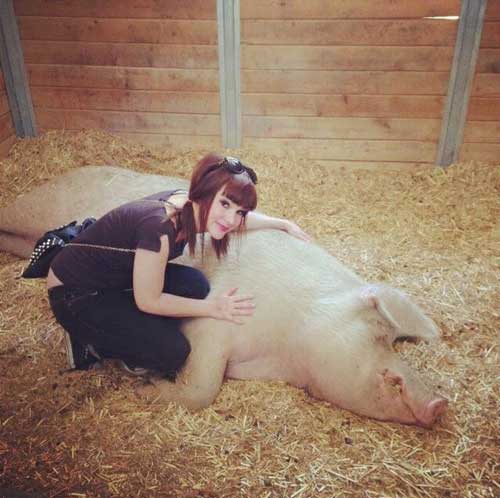
Wasp International
Wasp International are a not-for-profit organisation dedicated to provide accurate information on ethical animal sanctuaries worldwide.
They provide a directory of animal sanctuaries all over the world that they consider to be ethical.

Four Paws
The charity Four Paws runs a number of bear rescue sanctuaries, which you can find here. The list includes their biggest Sanctuary, the Belitsa Sanctuary in Bulgaria, which has rescued many bears from being forced to dance for tourists and being kept in cruel conditions.

Here is a list of ethical animal sanctuaries in Thailand. They include elephant, gibbon, dog and other wildlife rescues and sanctuaries.
In addition to this list,
Elephant Nature Park â This park encourages an end to elephants being used for trekking, shows, and street performing.
Watching the elephants as you walk through the park is much like a safari. You are there to watch and learn about these fantastic animals, each with a unique (and most likely tragic) story of their own. Most of the animals had a past spent logging or performing for others after cruel and tortuous negative reinforcement methods and training based entirely on fear and breaking them down mentally. The bullying is relentless until they have no mental strength left to fight, so do so they avoid further pain.
Ethical parks such as this one offer day trips or longer volunteer stays. Other responsible elephant experiences in Thailand can be found in places such as:
Jacobs Ridge Animal Sanctuary
Jacobs Ridge Animal Sanctuary offer volunteering trips to their sanctuary in Spain. You can stay in one of their fine “glamping” tents, with all your food and drink included, from ÂŁ560 a week. Your experience includes a few hours of light work a day, with time to go site seeing if you wish. The work is needed to keep the sanctuary going and help them care for animals. You can see where the money goes here. If you have further queries, the FAQs are here.
Their mission is for animals to live without fear. They welcome animal lovers who want to help their animals trust humans and show them that not all humans wish them harm. Their animals gain so much from the volunteers showing them love.
You can book your trip here.
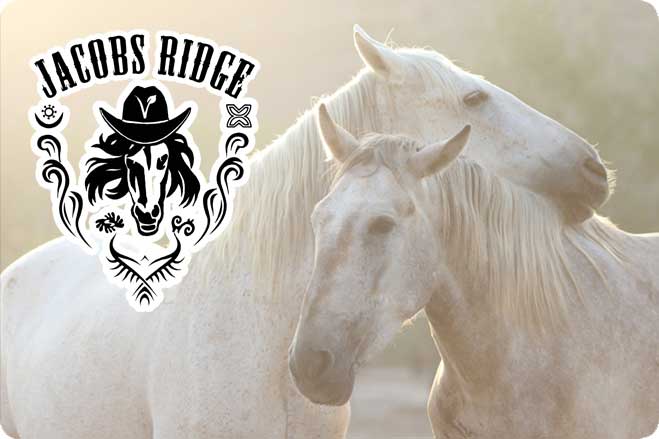
Responsible Travel
If youâre planning on attending another elephant attraction, be sure to check that riding is forbidden, and that no bull-hooks or other pain-inducing, or movement restrictive methods of handling or training are used. Also, make sure all elephants have access to shade and water. Responsible Travel have compiled a list of elephant sanctuaries which they do and do not support, along with their reasons.
Image: Website Responsible Travel lists elephant attractions they deem responsible and not. Source
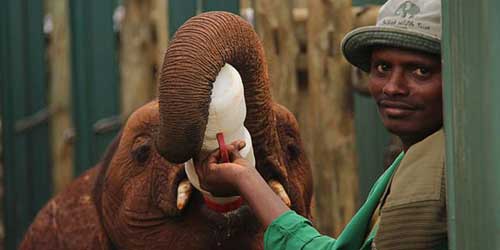
Ingrid Newkirk & PeTA
Ingrid Newkirk, co-founder and president of People for the Ethical Treatment of Animals (PETA) recommends a few places in the US: Wild Animal Sanctuary in Colorado, Chimp Haven in Louisiana and Save the Chimps in Florida (chimps were rescued from roadside zoos), Poplar Spring in Maryland and Animal Place in California.
In the US and Canada, PeTA warns of a number of attractions to avoid, here, but also recommends non-cruel places you can visit, such as: The John Pennekamp Coral Reef State Park, Key Largo, Florida. There, you can swim with animals on their terms, in their home; The Turtle Hospital, Marathon, Florida (Upper Keys). They rescue and rehabilitate turtles in trouble and releases all it responsibly can. You get to tour their centre and feed permanent residents.
In this interview with The Washington Post, Ingrid gives tips about how to make sure your travel plans are kind to animals, which includes refusing to travel with Air France, who are the only remaining airline to transport primates for use in animal experimentation.
Humane Travel
PeTA also work with Humane Travel, who not only provides customers with a great value, but are also dedicated to animal welfare. They provide comprehensive travel options and a charitable donation from virtually every booking. You can help a great cause by booking through them.
Mindful Wanderlust
A great website for finding ethical animal tourism destinations is Mindful Wanderlust. You can read personal accounts of destination experiences, and view photographs. Vegan Travel is another great site, and the same goes for Slow Vegan Travel.
This travel blog warns of cruel animal tourism, and what you can do instead.
Image: Find out how to travel ethically for animals and not fund cruel animal tourism. Source

Guidelines To Help You Avoid Funding Cruel Animal Tourism
World Animal Protection provide a guide to animal friendly travel, here
It includes the following guidelines:
- Donât accept culture as an excuse for cruelty: Cockfights, bullfights and the use of animals in religious or other festivals can all be considered part of a local culture.
- Donât try local cuisine if it includes wild animals: Avoid food items that include endangered animals, or involve inhumane production, such as bushmeat. Avoid drinking civet coffee, which may have been produced by civet cats kept in cages.
- View wildlife where it belongs: in the wild: Many zoos keep animals in poor conditions with their basic needs denied. Conservation zoos should have breeding programmes that meet the needs of the animals in their care, with a view to eventually releasing these animals, or their offspring, into the wild.
- Never pay to have your picture taken with a wild animal: Many of these animals have been taken from the wild. They may be drugged, harshly trained or have had their teeth removed so they âbehaveâ around tourists.
- Captivity cannot meet the natural needs of marine mammals like dolphins and whales: Activities like swimming with dolphins should always be avoided â they may appear fun and educational but are unnatural and stressful for the animals involved.
- Never buy souvenirs made from wild animals: Avoid all products and souvenirs made from animals, including all fur, ivory, shells, seahorses, teeth, rhino horn and turtle shell products.
- Avoid riding wild animals like elephants for entertainment: These animals are often captured from the wild, badly cared for and trained using inappropriate and cruel methods
Encouraging Tour Operators To Drop Cruel Attractions
WAPs campaign âWildlife, Not Entertainersâ is helping elephants by building a worldwide movement which is seeing travel companies moving away from promoting cruel elephant entertainment. You can find a list of these travel companies, here.
Check if your tour operator has an animal welfare policy, and if not, ask them if they will adopt one. Even asking them brings it to their attention that this is important to people, and will encourage them to do it.
Image: WAP provide a downloadable cruelty free travel guide. Source

More Important Hints And Tips
Although there is no perfect method for finding out if attractions are as responsible as they may paint themselves to be, here are some additional tips to help you minimise the chance you will be funding animal suffering: Do Your Research
Spend time before your trip researching which alternatives are available in the area youâre visiting. Though thereâs no easy and immediate road to finding the perfect attraction, the price you may pay in time is worth the positive impact youâll be making by avoiding cruel attractions like Chiang Maiâs Tiger Temple.
Hire A Local Guide
For both trekking and wildlife tours itâs important to find a guide whoâs interests are in both the local indigenous people and animals well being. Connect with a local and private guide by talking with the staff at your accommodation, explaining that youâd prefer someone who isnât connected with the larger tour agencies. They are more likely to show you their own smaller and less exploited village where you can respectfully learn about their lives. However, some guides may have arrangements with certain attractions where they earn money by taking people to them.
Cross Check Online Reviews
As part of your ongoing research before your vacation in Chiang Mai be sure to check popular tourism review sites such as TripAdvisor, making sure to read through both the good and the bad reviews to assess the full spectrum of other peoples thoughts on how responsible the attraction is.
Review Photos Of The Attraction
Whilst on TripAdvisor take a few minutes to scroll through the uploaded photos of previous visitors and reviewers of the attraction to analyse if you can see any questionable actions or treatment to the animals or people involved. For example, for elephant treks make sure to keep an eye out for photos of riding and also of people using bull-hooks or other harmful instruments on them.
Double Check Their âConservationâ Program
Part of the marketing for Tiger Temple implies that conservation is a part of their program and that their helping to encourage the re-population of tigers to the region. This is far from the truth. Tiger Temple in recent years has been in the practice of breeding for international sale (especially to China) and the popularity of their attraction only adds to their success illegally selling tigers and tiger cubs.
If in doubt, ask to see the full program details from your chosen attraction to see what their plans are for reintroduction to the wild.
Avoid Attractions Where Animals Perform Unnatural Acts
If animals are doing anything more than eating, drinking, sleeping, and playing with each other then itâs safe to say that theyâre doing something unnatural to their instincts or habits in the wild.
Performing tricks or doing human activities like painting, dancing, playing football, gymnastics or any other unnatural activities should be avoided at all times.
Ignore Places That Give â100% Guaranteesâ
Think twice before signing up for activities that offer 100% guarantees that youâll see something spectacular such as an animal in the wild. Nine times out of ten the animals and where theyâre found are staged events or locations so that you get the dream travel highlight youâve signed up for. Wild animals donât keep appointments. If youâre told the animals usually arrive at a certain time, it may be because theyâve been trained to expect food at that time, thereby disrupting their natural eating habits.
Before Booking, Ask The Tour Operator All The Right Questions
Prior to purchasing a trip through any tour operator, be sure to ask to see their licences and accreditation. This is especially important if theyâre marketing themselves as either eco, green, ethical, responsible, as a sanctuary, or as helping with conservation.
With the growing interest in responsible tourism the market is prone to âgreen-washingâ. Green washing is calling something one of the terms above, just to gain interest. Be mindful of who youâre booking through.
If You See Animal Cruelty On Holiday
If you see an incident of animal cruelty, note the date, time, location, type and number of animals involved. Record what you have seen on film or take photographs if you possibly can. However, do not put yourself in danger.
It is vital to lodge your concerns locally, otherwise the cruelty will continue long after you are gone. Report cruelty to:
- the local tourist offices
- local police
- a local animal welfare society
- your tour operator
- the zoo or aquarium management and â if you have serious concerns â the zoo association for that country.
When you return home, inform the countryâs embassy, your local politician, or the World Association of Zoos and Aquariums (if relevant).
Image: Caged bears at the restaurant in Sochi, in south-western Russiaâs Krasnodar Krai region. There, customers ply the bears with alcohol for entertainment. Source
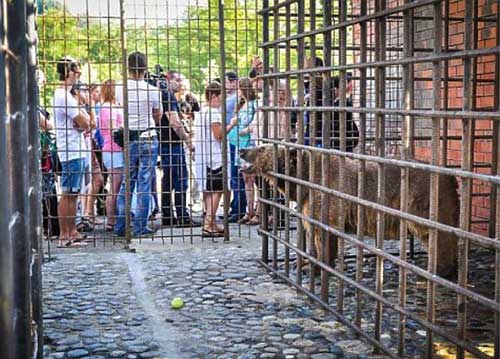
Image: Restaurant owner, Dzheniks Uzaroshvili, doesnât consider caging the bears in filthy conditions, making one blind, or making them alcohol dependant, as cruel. They have since been rescued by British charity Forgotten Animals, formerly called Big Hearts Foundation.
Source

How To Effectively Spread Awareness Of Animal Rights
Do you want to make the world a kinder place> Do you want to stop terrified animals being put through horrific cruelty? By raising awareness, you can do that. You can find more ways to spread awareness here.
Spreading the animal rights message can be very emotionally draining and distressing. Have a look on this page to find out how to be an effective advocate for animals, whilst making sure you keep your mind healthy and happy.
Other Ways To Help Stop Animal Suffering
On this site there are many varied ways you can help animals and help stop cruelty. In fact, there are so many different ways that there is something for every personality type, no matter what their circumstances.
If you would like to learn more about why we so urgently need to help stop animal suffering, please see this website. It will allow you to broaden your knowledge of many different types of world wide animal abuse, giving you the ability to help animals by spreading awareness and answering questions people may have. Please be aware that you may find the information distressing.
One great way to help animals is to share the information you have seen on this website. Doing so means more people could help stop animal cruelty, and that would make you responsible for more animals being saved from suffering. Together we can help people help animals <3
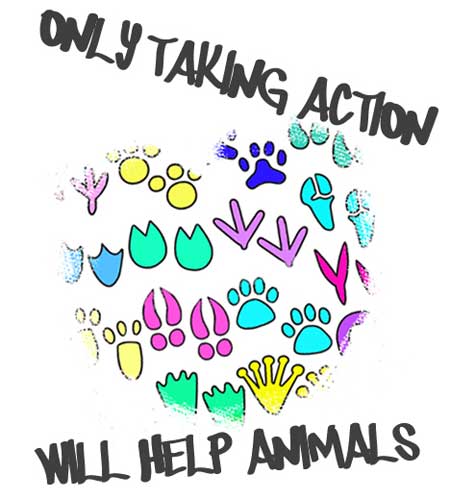
Have Your Say In The Comments Section
Do you know of any information we have missed, or do you have any information to add to this page? Please leave a comment to let everyone know about it.
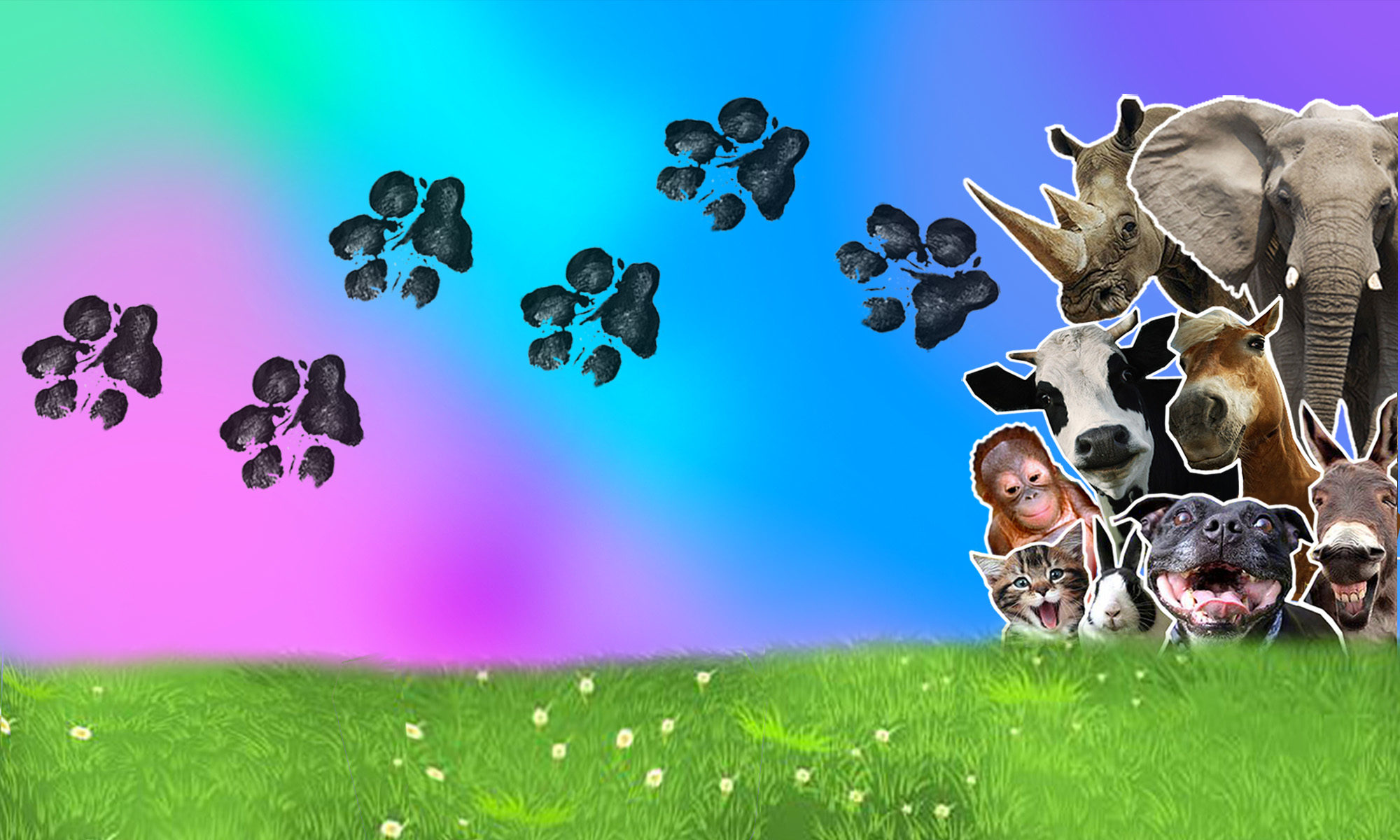
Does anyone know when this article was published and the author of it?